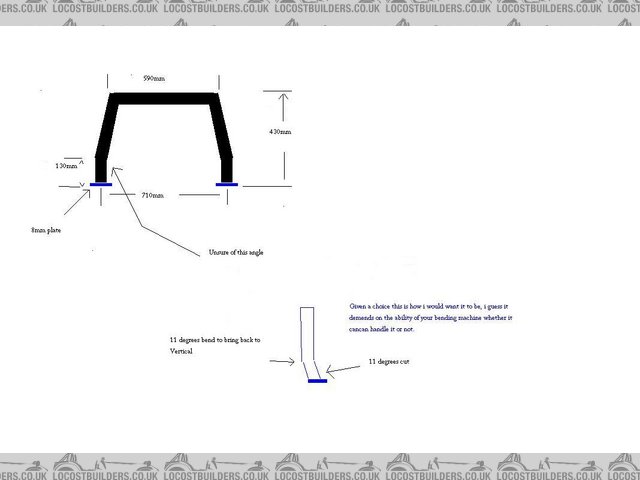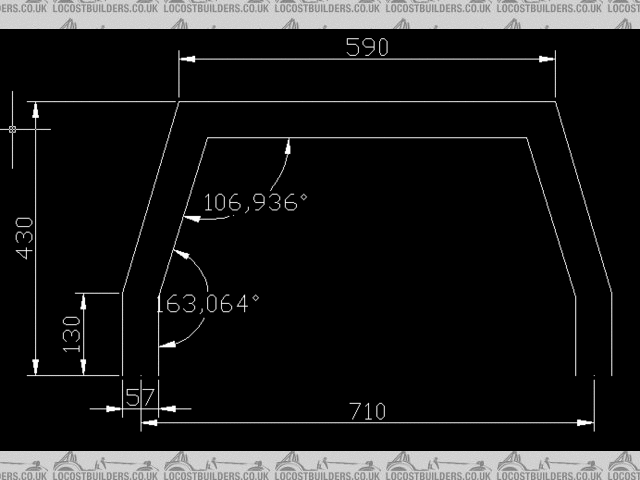The angle that forms the kink in the vertical leg and the angle that takes it to horizontal.
Can anyone help given the dimensions already on the drawing?


bar
Cheers
Colin

Guys i need to work out the 2 unidentified angles in the drawing below.
The angle that forms the kink in the vertical leg and the angle that takes it to horizontal.
Can anyone help given the dimensions already on the drawing?


bar
Cheers
Colin
What size pipe?
168.7 degrees, if my trig serves me right
HTH's
[Edited on 14/1/10 by omega0684]
57.15mm
Cheers
quote:
168.46 degrees, if my trig serves me right
I worked it out in AutoCAD to 166.1 degrees. I guessed the object as being 25mm box section. So I'm probably miles out
171.82 degrees is my answer
There are 2 angles though...............
quote:
Originally posted by omega 24 v6
quote:
168.46 degrees, if my trig serves me right
Not quite as you need the pipe diameter first.
OK so overall bottom width is 710 plus 57.15
equals
767.15
Minus the top size of 590
equals 177.15
divide by 2 to give base of triangle
equals 88.575
Tan of angle = opp/adj
so 300 ( 430 -130) divided by 88.575
equals 3.387
so inv tan equals 81.72 and then add the 90 degrees
equals 171.723
quote:
no you dont, all you need to do is work out tan^-1of 0.2 and then minus that from 180. from his drawing it takes the pipe diameter into account from the bottom measurement. (as he has put his marker in the centre of the tubes)
quote:
There are 2 angles though...............
I made it 163.55 degrees. I make arctan 3.3869 to be 73.55
quote:
Originally posted by mattf
I made it 163.55 degrees. I make arctan 3.3869 to be 73.55
quote:
I made it 163.55 degrees. I make arctan 3.3869 to be 73.55
Your way above me guys!
so the 2 angles will be???????
163.55 for the vertical angle ( the one you marked as unknown). And 106.45 for the other one
OOOPS didnt see your post giving the Dia so see below:


Rescued attachment AngleQuery.gif
quote:
Originally posted by mattf
I made it 163.55 degrees. I make arctan 3.3869 to be 73.55
beaten to it ..... should be tan c = ... in the above ... oops!!!
.... and then 300/88.75
[Edited on 15/1/10 by 02GF74]
Awsome,
Thanks a lot guys, It has helped me out of a bit of a sticky situation.
The power of LCB comes to the rescue again 
Don't forget that if this is being done on a "programmable" bender, you will have to include an element of over bending to allow for spring back.